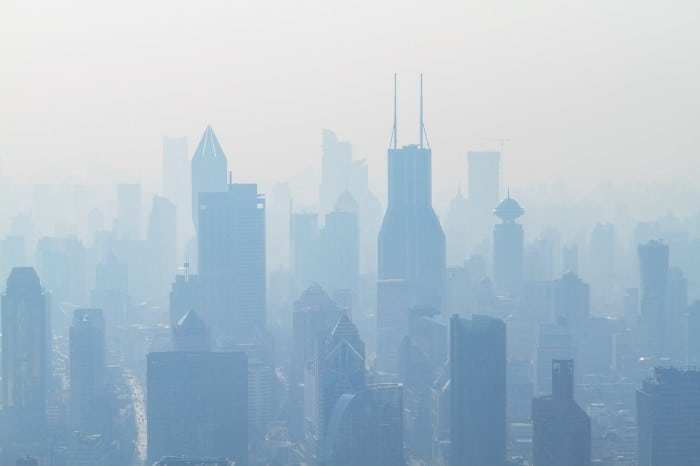
IIASA Emeritus Scholar Nebojsa Nakicenovic explains how the societal disruptions caused by the coronavirus pandemic can offer an opportunity for a more sustainable and innovative future.
While the future of humanity has always been unpredictable, major challenges — like the current pandemic — have been an inevitable part of our shared history. What is different now, however, is that human beings have become the dominant force of planetary change. In other words, the Anthropocene has arrived, and with it an unprecedented opportunity to steer our collective future.
Science, technology, and innovation (STI) are the drivers of this change, and can also be the means of achieving a sustainable, equitable, and resilient future for both human civilization and the biosphere. These tools, however, need to be complemented with the necessary evolutions of our economies, public institutions, and behavioral norms. The rapid rise in inequality and resource consumption over the last few decades, for example, has led to increasing pressure on people and the planet in ways that are clearly unsustainable. It is within this context that the COVID-19 pandemic could become a disruptive event that triggers fundamental change toward a more desirable future for all.
Human history is rich with other instances of rapid social and environmental evolution, from the agricultural turn of the Neolithic Revolution some ten thousand years ago to the explosive changes brought about by the Industrial Revolution two centuries ago. However, it was the ‘great acceleration’ of the last 50 years, characterized by exponential growth of consumption and rapid degradation of planetary support systems, that brought us to the geophysical limits of our home world for the first time. These rapid developments were neither smooth nor pervasive, and were interlaced with many crises, wars and pandemics, natural disasters, and numerous other disruptive events. Yet over the last 200 years we’ve seen a 7x increase in the global population, a 100x increase in economic output, and a 20x increase in carbon dioxide emissions.
 © Holger Link on Unsplash
© Holger Link on Unsplash
In the aftermath of major crises that caused deep disruption, loss of life, and the destruction of capital and jobs, a ‘new normal’ eventually emerged — the major depressions of the 1870s and 1930s, as well as the oil crisis of the 1970s, are just three examples among many. Events like these arguably amplified the limits and disadvantages of the ‘old’ and paved the way for the ‘new’, with each crisis catalyzing innovation and the re-direction of human activities towards a fundamentally new direction. Today, we might say that each caused a tipping point that led to new development and behavioral pathways.
The COVID-19 pandemic, one of the greatest threats to human societies in recent memory, can be seen as a similarly catalytic event. While history does not repeat itself, there are many similarities in the response strategies to earlier pandemics such as the Black Plague of the middle ages and the Spanish Flu of the 1920s, including policies of ‘social distancing’ and isolation and barriers of entry to those from ‘outside’. Even the word quarantine (meaning ‘forty days’ in Venetian) was first coined during the plague epidemic of the 14th century.
 © Cheng Feng on Unsplash
© Cheng Feng on Unsplash
Today’s crisis, as in the past, has revealed the worst parts of our nature, as with the callous exclusion of the needy, homeless, and migrants from the emerging responses, as well as the hoarding of perceived scarce goods by the well-off. At the same time, the pandemic has brought out some of the best human characteristics: self-sacrifice in helping others, renewed empathy and solidarity, and unprecedented global cooperation within science and between governments as we work to stem the worst of the pandemic.
Moreover, there is mounting evidence that the partial shut-down of the global economy has had demonstrably positive effects on the environment, such as reduced emission levels, lower pollution, and a resurgence in wildlife. While an economic depression is by no means a viable mitigation strategy for climate change and other pressing environmental issues, these data make clear that the right policies and priority investments in STI could have immediate and significant effects in our efforts to transition to a sustainable world.
Many scientists, policymakers, and other stakeholders are already working to leverage this current moment of opportunity into lasting change. The World in 2050, a global research agenda aiming to help reach the United Nations’ Sustainable Development Goals, offers six transformations that outline essential STI, institutional, and behavioral synergies to achieve the new direction for human development while providing critical support for the most vulnerable among us. The Earth Commission, a group of leading scientists convened by Future Earth, is working to underpin the development of science-based targets for systems like land, water, and biodiversity in order to guide companies and cities towards sustainable pathways, as many thought leaders are beginning to reconsider the stability and efficiency of our current economic systems. Thomas Piketty, for example, has recently proposed that every person should receive $120,000 at age of 25 to enable innovative initiatives among those who lack the capital to do so. Bold efforts like these will become increasingly necessary as we work towards a new set of planetary operating parameters that will ensure an equitable and sustainable future for all.
Our response to COVID-19 could help redirect trillions of dollars towards this agenda. While current measures aim to preserve existing institutional and economic arrangements, we should press decision makers to actively channel these funds into the drivers of innovation to bring about the future we want to live in. This deep and ongoing crisis may destroy some of the ‘old’ characteristics of this moment in human history, and could bring about the transformations in sustainability that will enable us to build a better future for all life here on Earth. The risk is that exactly the opposite will happen — and that is a risk that humanity cannot afford to take.
This piece was originally published on Medium and Future Earth.
Note: This article gives the views of the author, and not the position of the Nexus blog, nor of the International Institute for Applied Systems Analysis.